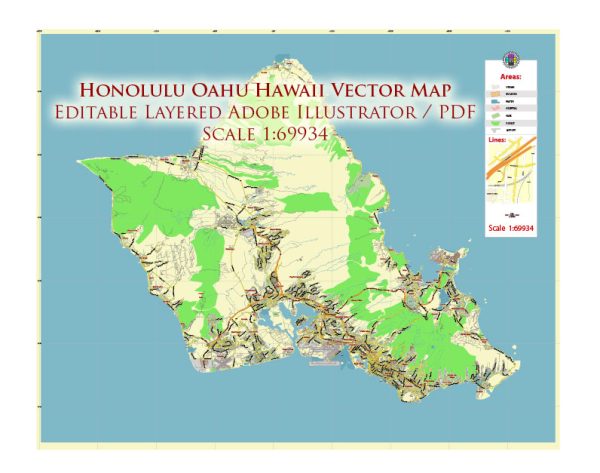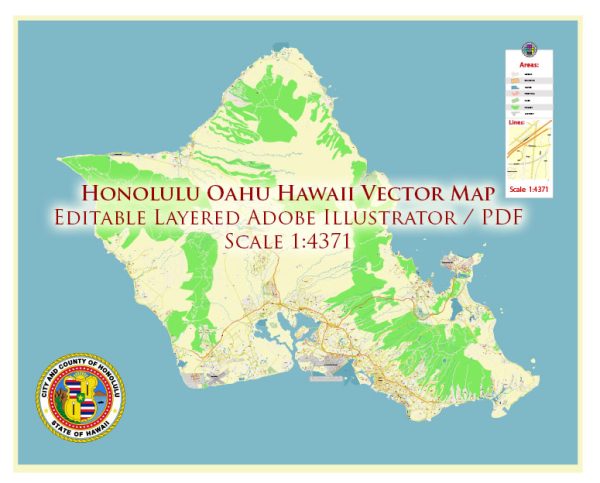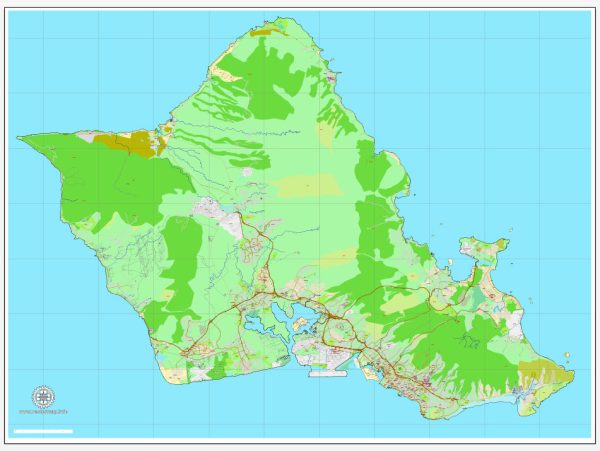Honolulu, located on the island of Oahu in Hawaii, is the capital and largest city of the state. It is known for its beautiful beaches, vibrant culture, and diverse population. Here’s a socio-economic description of Honolulu, Oahu, Hawaii:
- Economy: Honolulu’s economy is diverse and driven by various sectors, including tourism, military, trade, and services. Tourism plays a significant role, with millions of visitors arriving each year to enjoy the city’s beaches and attractions. The military presence, with several bases in the area, also contributes to the local economy. Additionally, Honolulu serves as a regional hub for finance, trade, and professional services.
- Income: The cost of living in Honolulu is relatively high, and this has a significant impact on income and standard of living. The median household income is above the national average, but it can be challenging to make ends meet due to the high cost of housing, transportation, and other living expenses.
- Housing: Honolulu’s real estate market is among the most expensive in the United States. Housing costs are significantly higher than the national average, with limited availability of affordable housing. This has led to issues of housing affordability and homelessness in the city.
- Education: Honolulu is home to the University of Hawaii at Manoa, which is the flagship campus of the University of Hawaii system. It also has a well-developed public school system, with many private and international schools serving the diverse population.
- Cultural Diversity: Honolulu is one of the most ethnically and culturally diverse cities in the United States. The population includes people of Asian, Pacific Islander, Native Hawaiian, Caucasian, and other backgrounds. This diversity is celebrated through cultural events, festivals, and a variety of international cuisine.
- Tourism: Tourism is a major driver of Honolulu’s economy. The city is a popular destination for tourists, who visit to enjoy its beautiful beaches, such as Waikiki, and explore its cultural and natural attractions, including the Pearl Harbor historic sites, Diamond Head, and Hanauma Bay.
- Transportation: Honolulu has a well-developed public transportation system, including buses and trolleys, to help residents and visitors get around the city. The city also has a well-connected airport, Daniel K. Inouye International Airport, facilitating travel to and from the mainland United States and other international destinations.
- Healthcare: Honolulu has a robust healthcare system with several hospitals and medical facilities. It serves not only the local population but also residents from neighboring islands who may need specialized medical care.
- Environmental Concerns: As an island city, Honolulu is acutely aware of environmental issues, such as climate change and sea-level rise. Efforts are being made to promote sustainability and reduce the city’s carbon footprint.
- Cultural and Recreational Opportunities: Honolulu offers a wide range of cultural and recreational activities, including museums, theaters, and outdoor recreational opportunities such as hiking, water sports, and golf.
Overall, Honolulu is a unique and vibrant city with a strong economy, a focus on tourism, and a culturally diverse population. However, the high cost of living, particularly housing, remains a significant challenge for many residents.




 Author: Kirill Shrayber, Ph.D.
Author: Kirill Shrayber, Ph.D.